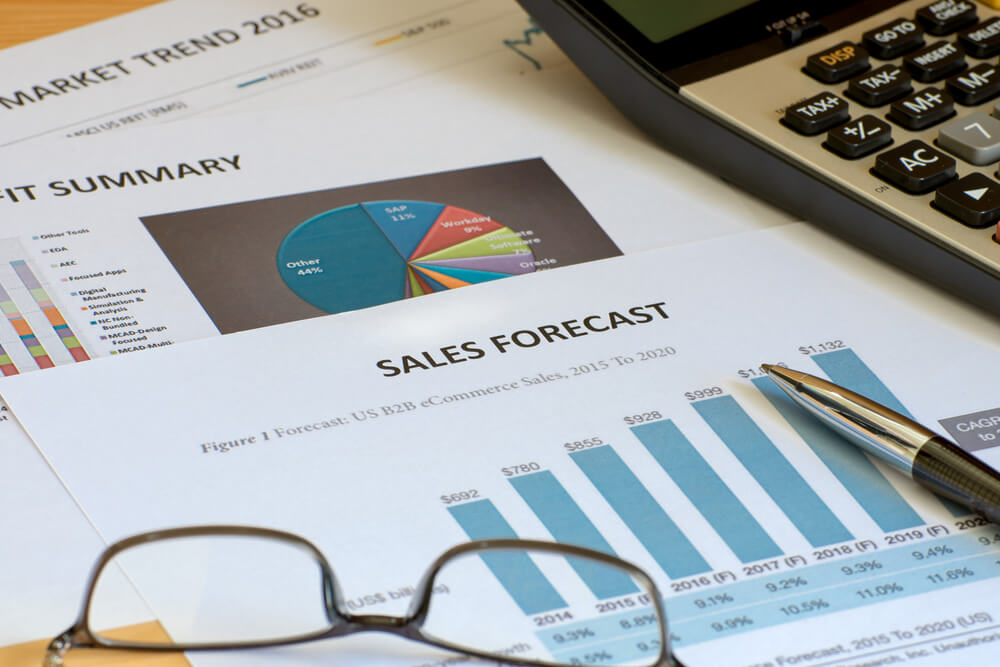
Sales Projections Made Simple: A Guide for Better Accuracy
Accurate sales projections are essential to the long-term liquidity of any company. After all, how can you make a budget if you don’t know how much cash will be coming in from sales? A big part of fractional sales management services is taking whatever sales forecasting system that a company may have and make it as accurate as possible.
This article takes a look at some of the best methods and strategies for crafting sales projections that actually pan out in the real world, including the following:
- Common challenges in achieving accurate sales projections.
- Strategies for enhancing forecasting accuracy.
- Proven sales forecasting methods.
- Effective forecasting techniques.
- Measuring and ensuring sales forecast accuracy.
There is a lot to discuss, so get ready to take notes. Let’s go!
Need some direction for increasing sales? Watch this video to learn what DAP can do for you!
Common Challenges in Achieving Accurate Sales Projections

Companies of all sizes rely on analytics for accurate sales projections for effective budgeting. Sales forecasts are a big part of predicting how much cash you will have on hand to allocate to various projects. If the money will not be there from sales, the company will have to find alternate sources of funding, scale back or abandon operational initiatives. They may possibly even fall far enough behind that the business could permanently close its doors. Needless to say, it is important to get accurate sales forecasting right.
Common challenges associated with achieving accurate sales projections include:
1. Analyzing Historical Sales Data
Sales projections usually start with historical sales data. Past sales figures are not necessarily predictive of future sales, but there are worse assumptions to make than a continuation of your current momentum or a repeat of trends and cycles. However, you do not want to over-rely on the assumption that trends will continue or that next year will be a mirror-image of last year. Businesses and markets are constantly changing, and historical sales data can and do sometimes lead to wildly wrong conclusions.
2. Incorporating Market Trends and Analysis
External market factors will inevitably play a role in the sales figures that the company actually produces. Accurate sales forecasting must account for these market trends as best they can. Since we are talking about global macroeconomics, our ability to predict (and certainly shape) those trends are limited.
3. Setting Realistic and Achievable Targets
It is always a challenge to strike the right balance between optimistic and conservative. Too optimistic of a target could result in over-allocation and future cash crunches. Too conservative of a target may lead the company to underperform or grow more slowly than it could have.
4. Utilizing Technology and Forecasting Tools
Choosing the right tech tools makes a big difference in the accuracy and effectiveness of sales projections. There are free tools, inexpensive web tools, enterprise-level tools, and certain other tools (like CRMs) that have sales projection tools built into them. With so many options, it is easy to become overwhelmed, and using the wrong tool (even a good one) can muddy the waters of your sales projection.
5. Regularly Reviewing and Adjusting Projections
Since companies, markets, and economies are constantly changing, last month’s sales projections could easily become outdated, even obsolete. Smart companies constantly review, adjust, and update their projections on a quarterly or even monthly basis.
6. Involving Cross-Functional Teams in Forecasting
Many departments will contribute to the sales projections — marketing, sales, R&D, product managers, and owners. Bringing those silos together into one cross-functional team for the most accurate possible sales projections can be a challenge.
Strategies for Enhancing Forecasting Accuracy
So, what does it take to develop a sales forecasting strategy? It involves examining the company and choosing the correct forecasting method, forecasting technique, and method of measuring the accuracy of the projection.
Outlined below are proven forecasting methods and techniques utilized by any successful fractional sales management services agency:
Proven Sales Forecasting Methods

1. Straight-Line
The straight-line method of sales forecasting is one of the simplest. It looks at historical sales data and assumes that sales will grow at a constant, consistent rate. While there may be problems with this method, it is surprisingly effective for some companies under certain circumstances.
2. Moving Average
The moving average method of sales forecasting takes your historical sales data and attempts to “flatten” the curve. Each point on the projection is actually the average of the points ahead of and behind it. This has the effect of smoothing out any anomalous spikes or valleys that might be used to make inaccurate assumptions.
3. Simple Linear Regression
Simple linear regression is a statistical method designed to create a single equation to describe the linear relationship between a dependent variable and an independent variable. In the case of a sales projection, the dependent variable would be sales or revenue, while the independent variable might be product pricing, marketing spending, or another factor thought to influence sales.
4. Multiple Linear Regression
Multiple linear regression is like simple linear regression, but as the name implies it is more complex. It attempts to create a single equation to describe the relationship between one dependent variable (sales) and multiple independent variables.
Effective Forecasting Techniques

1. Length of Sales Cycle Forecasting
Length of sales cycle forecasting is a technique to predict the amount of time that it takes for a sales opportunity to reach fruition, from first contact to closing of the sale. This variable can improve the accuracy of the sales projections that you make based on the number and velocity of sales opportunities available.
2. Opportunity Stage Forecasting
Opportunity stage forecasting is a technique that predicts the likelihood of any given lead or opportunity moving from one stage of the sales process to the next, up to and including a closed sale. These forecasts can help businesses estimate how many of their current or predicted sales opportunities will result in a sale.
3. Pipeline Forecasting
Pipeline forecasting is a technique that involves estimating how many sales opportunities (i.e. qualified prospects) will come into the “pipeline” over a given period of time. Combined with the above analyses, you can begin to form a complete picture of the volume of sales that you can reasonably expect in the future. Continually qualifying the pipeline also helps improve the accuracy of your projections.
Measuring and Ensuring Sales Forecast Accuracy
As time progresses, you will want to add another variable to your sales projections — one or more measurements of the historical accuracy of your projections. By measuring how accurate your past projections were, you can make assumptions about how accurate your future projections will be. This allows you to identify areas for improvement and adapt your budgeting procedures for expected ranges of inaccuracy.
The two most common metrics for measuring your sales projection’s accuracy are MAD and MAPE:
1. Mean Absolute Deviation (MAD)
Mean absolute deviation (MAD) compares the projection to the actual sales figures over time, determines how far apart the two were, and takes the average. This average gives you a rough estimate of how much future sales might deviate from the projection (assuming you use the same projection methods and do not attempt to refine them for better accuracy).
2. Mean Absolute Percentage Error (MAPE)
Mean absolute percentage error (MAPE) measures the deviation of the real sales figures from your progressions not as an absolute number, but as a percentage. As your volume grows, the raw number of MAD might go up, but MAPE might stay the same, as your sales projection method may deviate proportionally. For example, if you have $20,000 MAD with a MAPE of 3%, doubling your sales volume might produce a MAD of $40,000, but the MAPE is still 3%.
Summing Up
Refining your sales projection methodology to produce better accuracy is important, but it is not simple. Many variables, factors, techniques, and methodologies go into creating a projection that accurately predicts future sales. These include the realistic use of historical sales data, correct forecasting methods and techniques, and assessing the accuracy of your sales projections.
As complicated as these may seem, it is worth the effort when you find that you have more than enough cash-on-hand to execute the business initiatives of your team.
Not sure where to start to make your sales projections more accurate? Digital Authority Partners (DAP) is here to help! Our fractional sales management services include a full audit of your sales projection methodologies, including refinement recommendations and tool implementation to make them more accurate than you ever thought possible. Contact us today to schedule a consultation.
Want To Meet Our Expert Team?
Book a meeting directly here




